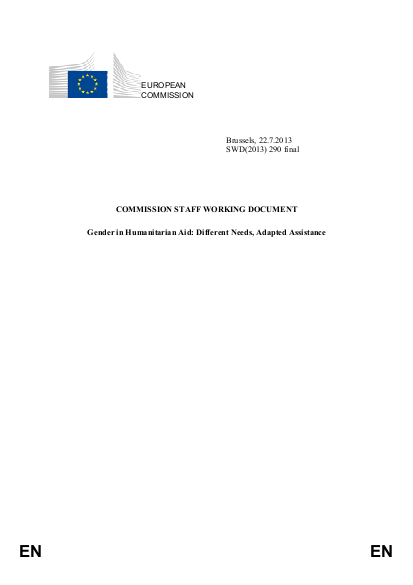
Strengthening the gender approach within the European Union's (EU) humanitarian aid is a commitment made in the European Consensus on Humanitarian Aid,1 which highlights the need to integrate gender considerations, to promote the active participation of women in humanitarian aid and to incorporate protection strategies against sexual and gender-based violence.
In 2009, the Commission carried out a review of gender issues in humanitarian aid,2 which concluded that it should actively promote a shared understanding of what gender-sensitive humanitarian assistance means in practice.
Building on these commitments and inputs, the present Staff Working Document further develops the framework for systematically integrating gender perspectives into the European Union’s humanitarian assistance, in order to improve the quality and effectiveness of its actions. The aim of this document is to help foster a common understanding between staff and partners, aimed at promoting adequate humanitarian responses to the needs of women and men of all ages. This text also builds on the practical experience gained by our field-based experts and is the result of consultations with relevant stakeholders. As such, it will help serve as a guide particularly from an operational point of view.
This document covers aspects linked to advancing gender integration, such as programming, capacity building, advocacy and accountability. It also describes new working tools to ensure that humanitarian aid is more gender sensitive, namely a gender and age marker. However, it does not address issues related to gender balance and equal opportunities in staffing (unless related to humanitarian operations), since these are covered by an overall policy of the Commission.
Equally, this document does not cover sectoral issues. Recommended guidance on mainstreaming gender in the different technical sectors is already available.4 Therefore, this document does not explore sector-related areas that are of great relevance to gendersensitive humanitarian assistance — such as men and women’s reproductive health, or specific nutritional needs of new-borns, children under five years, pregnant and lactating women and older persons, etc.